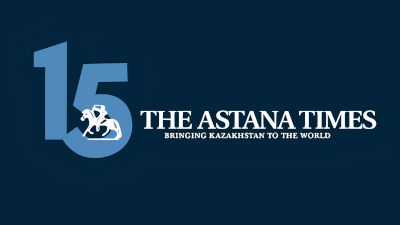If you ask American ambassadors what resources and program they cannot do without, almost every single one will answer, “Our exchange programs that provide people-to-people experiences”.
Encouraging people-to-people programmes is an important part of diplomacy for any country, and certainly for the United States. That is because diplomacy is not just about providing visas for travellers, not just about passing messages from government to government: it is also about building enduring links between two nations. And, ultimately, that is what is most important because it allows two nations to have a strong foundation for collaboration, even when their government relations might go through rough patches.
On the U.S. side, these include educational and cultural exchange programmes and, probably most important, U.S. Department of State International Visitor Leadership Program (IVLP) that identifies younger and mid-level experts in their fields and provides them with an intense programme in the United States to meet and develop enduring relationships with their counterparts. IVLP participants have become leaders in their fields later in life, and a good number have become heads of government and heads of state in their home countries.
I know that Kazakhstan thoroughly understands this concept and has made it a fundamental part of its own government policy from the beginning of its independence. I am referring to the Bolashak Programme that has played a terribly important role in setting Kazakhstan apart from its neighbours and that has played a central role in putting Kazakhstan on the world stage.
Long-time Kazakhstan watchers must certainly recall that at independence President Nazarbayev said that if Kazakhstan is to be truly independent, it will need a new generation that thinks differently from the past. To implement that broad vision, he created Bolashak. I am very grateful that the government of Kazakhstan chose the United States as one of the principle venues for educating its young people to become the future leaders of their newly independent nation.
Today, throughout Kazakhstan, one can walk into almost any government and private-sector office, and meet young Kazakhs who understand the world in a way that allows them to do the daily business of life that consistently moves their nation forward. That is a huge achievement, and I sincerely salute President Nazarbayev for his far-reaching vision.
There is another, slightly different perspective to the importance of the people-to-people exchanges. As diplomats, yes, we do spend time passing messages between our governments, working together for mutual goals, and actually getting things done that matter. But we can only do that effectively if we have already built solid relationships of trust and respect with our mutual counterparts.
There are two examples of people-to-people relationships between Kazakhs and Americans that came to fruition during my tenure as U.S. Ambassador to Kazakhstan that have actually led to a better world.
The first example I would cite is our scientific and technical experts working together to create the Central Reference Laboratory in Almaty that is playing a crucial role to ensure that biological pathogens are securely contained so that they can never be used as weapons of mass destruction. This took many years of working together and slowly building trust with each other, but both Kazakhstan and the United States got it accomplished. This is indeed an enormously successful scientific programme that has truly important humanitarian goals.
The second example of our experts working together is even more important – the clean-up of the Soviet-era BN-350 nuclear reactor on the Caspian coast that eventually led to permanently securing, locking down on the remote steppe outside Kurchatov, enough plutonium and highly-enriched uranium that could have made 775 nuclear weapons. Related to this is the collaboration of our experts to clean up the former nuclear-weapons test site at Degelen Mountain to prevent the contaminated remnants of Soviet-era nuclear tests from falling into terrorists hands.
Neither of these hugely important projects could have been accomplished without the trust that builds slowly, day to day, as a result of people-to-people relationships.
As Kazakhstan marks a quarter-century anniversary of its foreign service, I am pleased to join in the celebrations. In my tenure in Astana and career at the State Department, I have seen the dedication of its diplomats and their commitment to the aims and values of the country’s foreign policy.
To the new generation of diplomats in both countries, I say this: people-to-people relationships are the absolute core of diplomacy. It’s not documents and talking points that get things done. In the end, the only thing that matters is people-to-people relationships.
The author is former U.S. Ambassador to Kazakhstan who currently serves as U.S. Co-Chair of the Organization for Security and Cooperation in Europe’s Minsk Group for Nagorno-Karabakh.


